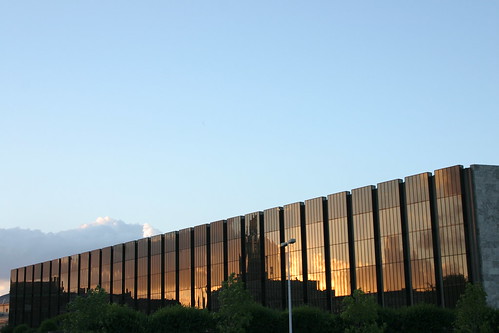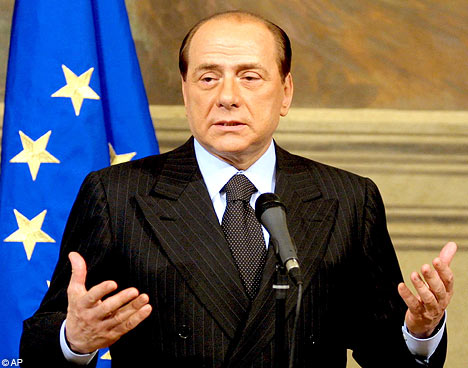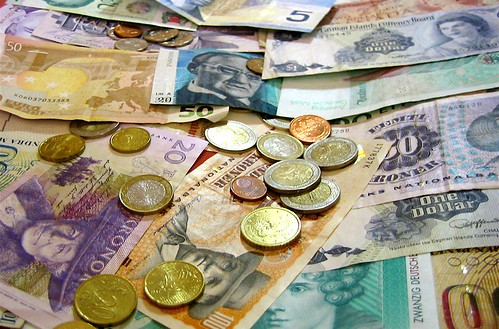Keith Hembre dumped bonds and buy stocks when the Fed announced its plan of 03 November to buy 600 billion U.S. dollars of Treasury bonds. The reason: to benefit from market gains expected in the days of Federal Reserve purchases.
The chief economist and investment strategist at FAF Advisors Inc. may be on to something. Most of the demonstration on 47 percent of shares during the past two years occurred in the days when the Fed pumped money into the markets by buying bonds. From the round of $ 1,700,000,000,000 first quantitative easing began on December 5, 2008, 500 of Standard & Poor's stock has risen a combined total of 267 points over the 211 days that the Fed was the addition of stimuli, compared with 128 points in 297 days when he was not.
"We took measures," said Hembre, who helps manage more than $ 86 billion to the U.S. unit Bancorp in Minneapolis. "The main benefit of ending quantitative easing to support the price of riskier assets, not necessarily that of Treasuries."
The data may reinforce the claim Fed chairman, Ben S. Bernanke 's of its asset purchases are inducing investors to buy securities with higher yields, despite central bank's dollar does not go directly into the stock market. Fed officials are counting on the second round of quantitative easing to revive an economy plagued by inflation and too low an unemployment rate near 10 percent.
'Conspiracy Theory'
Some investors see a "conspiracy theory" that the central bank makes an expression of values in the days of your purchase, Bank of America Merrill Lynch strategists led by Jeffrey Rosenberg said in a report of 02 November. While the report showed that inventories increased in 15 of the 24 days, the New York Fed buys Treasuries from 17 August until early last month, Rosenberg said he is skeptical of a direct cause of positive economic indicators few days.
The data compiled by us show that the S & P 500 gained an average of 0.16 percent on the purchase of day for the past two years, four times the 0.04 percent in days not buy.
Bernanke has not made public made a connection between stimulus and daily fluctuations of the stock market. The head of the Fed, which meets tomorrow's policy makers in Washington for their last meeting in 2010, examined the correlation only in general terms last month. The Fed's program seems to be effective "because stock prices rose and interest rates fell in the long term as investors began to anticipate a second round of purchases, Bernanke said in a Nov. 4 op-Washington Post.
"Assume more risk"
"I have yet seen any black helicopters flying outside the New York Stock Exchange, but one of the reasons that have quantitative easing, of course, is to force investors to take more risk," said John Lonski head of Moody's Capital Markets Group in New York. "It increases the supply of financial capital to the private sector, with the possible consequence of boosting the economy."
market share gains contributed to higher growth through the so-called wealth effect, or the tendency of consumers to spend more than their assets are appreciating in value, said Lonski.
Nine of the S & P 500's 10 main industry groups, led by shares of financial companies, increased more in the days when the Fed opened its checkbook to, or the results of what he calls the Permanent Open Market Operations . The group of 81 banks, insurers and investment firms, including New York, JPMorgan Chase & Co. and Wells Fargo & Co. of San Francisco, rose an average 0.32 percent, compared with a fall of 0, 04 percent in days not POMO.
"Incredibly important"
FX Concepts LLC, the largest currency hedge fund, buying higher-yielding assets such as shares and the Aussie dollar when the Fed is buying bonds, said John R. Taylor, who manages about $ 8 billion as president of the firm based in New York. The days have become "incredibly important for the market," said Taylor.
David Skidmore, a spokesman for the Board of Governors of the Fed in Washington, and Deborah Kilroe, spokesman for the New York Fed, which carries out the purchase, both declined comment.
Fed program to purchase, known as quantitative easing, works by increasing the amount of bank reserves in the system. Policy makers on the desktop in markets from New York Fed to buy government securities primary dealers or agents who are authorized to trade directly with the central bank, adding funds to the accounts of dealers and the creation of reserves in their clearing banks. Financial firms were parking $ 979,000,000,000 of the Federal Reserve reserves in excess of the requirements from 01 December, gaining 0.25 per cent interest.
central bank's purchase helps the economy through the "portfolio balance channel, as investors substitute Treasury securities with other assets, said Bernanke in a speech Aug. 27 at Jackson Hole, Wyoming.
Close correlation
Not all investors subscribe to the idea that the Fed purchases of bonds inflated stocks on a given day. Historical data are limited, and the rally since July is "closely related" to other news, such as economic reports and earnings, said James Paulsen, chief investment strategist at Wells Capital Management in Minneapolis, a unit of Wells Fargo.
"I had a problem with people focusing so much on what the Fed to do, as if that is all that dictates what is happening," said Paulsen, who helps manage more than $ 300 million.
Bank of America Rosenberg of Merrill Lynch, which are the shares outperformed the days when the Fed was going to buy, also cited economic data increases. "The same correlation is not causation," said Rosenberg, head of global credit strategy in New York.
The increase in retail sales
Some indications point to a U.S. recovery steam winning, even though unemployment has remained at 9.4 percent or higher since May 2009. The U.S. retail sales rose in November for more than eight months, manufacturing expanded for 16 consecutive months and consumer confidence rose in December to a maximum of six months.
The S & P 500 rose last week averaged 0.17 percent in the four days with purchases by the Fed, which rose 0.6 percent on December 10, without buying the central bank, to close at 1240.40 at 4 pm in New York, its highest level since September 2008.
Hembre FAF Advisors, 43, a former researcher at the Minneapolis Fed does not agree with the critics. "You see substantial excess return of risky assets," he said. The money from the Federal Reserve, while kind of being put directly in the bond market, will be reassigned to putting people at risk. "
Bond prices, however, declined on average during the past two years, when the Fed bought securities. The yield on the benchmark 10-year rose an average of 0.6 basis points, based on yields generic. A basis point is 0.01 percentage point.
Growth Prospects
This can be explained by the addition of more investors to forecast risk and faster growth, Hembre said. Equities benefit in the coming months as the Fed sticks to its plan to buy Treasuries in June, he said.
The Federal Reserve could even extend bond purchases beyond $ 600 billion, Bernanke said in an interview broadcast on December 05, s of CBS Corp. "60 Minutes" program.
The central bank's actions have been criticized for Kansas City, Thomas Hoenig, president of the Fed and Ohio Republican John Boehner, the presumed U.S. Speaker of the House, for its potential to stoke inflation or fuel bubbles in asset prices.
The Fed is "basically propping up stocks," said Nicolas Lenoir, chief market strategist at ICAP plc ICAP Futures LLC in Jersey City, New Jersey. "You must have good economic statistics that motivate people. The transfer of wealth created from stock in real economic activity does not work."
Impact of Fed
This is not the first time that traders have hypothesized about the impact of the Fed about stock prices. Some investors in 1999 gives a demonstration of securities liquidity support to those responsible for policy programs initiated due to concerns about software problems when 2000 began, said Scott Pardee, who worked at the New York Fed from 1962 to 1981. The S & P 500 returned 15 percent in the last three months of 1999, most of its 20 percent gain this year.
"The Fed has no intention to manipulate the market," said Pardee, 74, who was senior vice president and chief operating outside the Federal Open Market Committee from 1979 to 1981 and now teaches monetary economics at Middlebury College in Vermont.
He had a brush with the issue personally. Some bond traders against Pardee in the 1980 at a party at a pier on the East River in Manhattan after the Fed released larger than expected monetary aggregate numbers one week, indicating interest rates could be increased, said.
Traders "began to argue about why the Fed was manipulating the money supply much," said Pardee. "I was afraid they would throw me into the river."
The central bank is now causing investors hunting for yield to increase demand for low-risk assets like Treasury bonds, said Jeffrey Saut, chief investment strategist at Raymond James & Associates in St. Petersburg, Florida.
"If the ATM is spitting out $ 20, you are more likely to track money from the mattress," said Saut.











